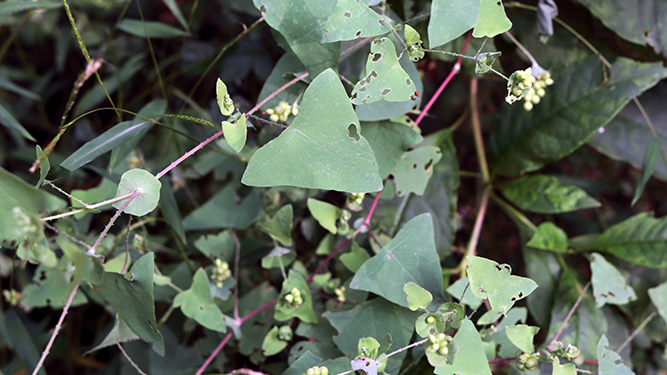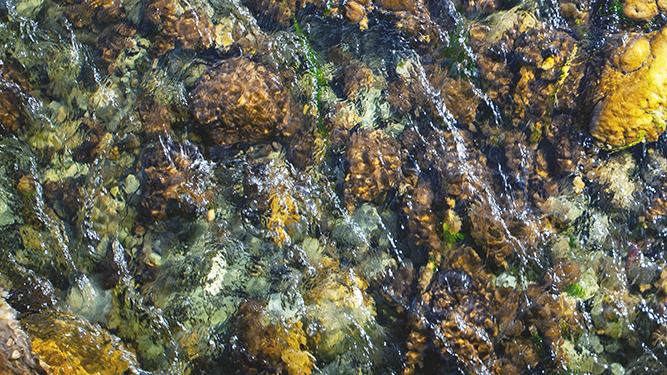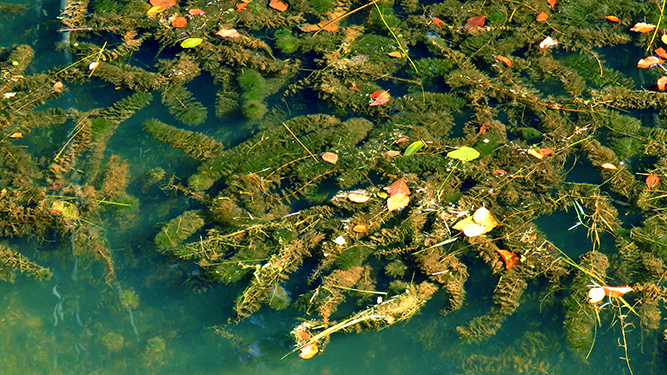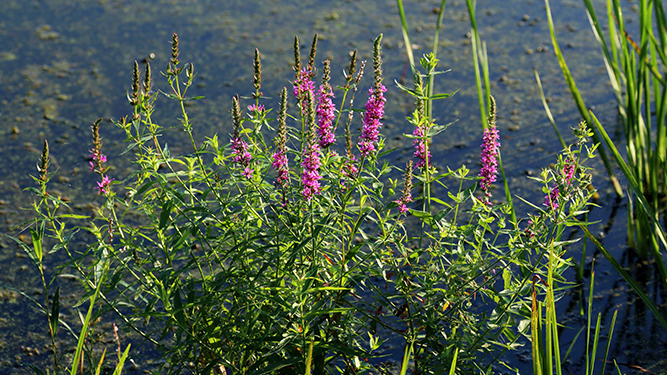If you regularly enjoy fishing in Pennsylvania, you’ve probably encountered a literally growing problem around Commonwealth waters.
Have you ever anticipated with great excitement arriving to your fishing “spot” only to be disappointed because you can’t access it any longer?
Perhaps you recall entry to this area was somewhat complicated in the years prior due to encroachment of vegetation, but now, it is impenetrable.
It is likely that the offending green mass is composed of at least one invasive plant species.
Common Invasive Offenders
Just walking into your preferred fishing destination can by stymied by multiflora rose and barberry; but closer to the bank, knotweed and poison hemlock can be maddening.
Not only can they routinely tangle a back cast; in the case of poison hemlock, don’t dare let it touch your bare skin because it can produce painful blisters.
Invasive Trip Hazards

Mile-a-minute vine
The walk in can also be complicated by a few invasive plants with generally lower profiles, including Japanese honeysuckle, wineberry, and mile-a-minute vine.
Most fishermen have had their boots tangled in these at least once.
If you’re unfortunate enough to fall, reaching to break your descent could result in a handful of spiny barbs from wineberry and mile-a-minute vine.
Wineberry’s tendency of rooting from its arching canes makes perfect snares for ambling fishermen.
Slimed

Signs of didymo among rocks underwater
In some bodies of water, it is nearly impossible to retrieve your bait and hook without it frustratingly coming back “slimed” with didymo, an invasive type of algae that is also known as “rock snot.”
Fish usually won’t bite a presentation cloaked in didymo, so fishermen must painstakingly remove the mess upon virtually every retrieval.
Snagged

Eurasian water-milfoil
If you have fished long enough in Pennsylvania, chances are you’ve been snagged on one or both invasive species of water milfoil (Eurasian and/or parrot feather).
Although freeing your hook from these is usually not a problem, these can be aggravating when trying to achieve the perfect drift or retrieval.
This process also commonly causes premature loss of bait.
Carolina fanwort and floating primrose willow are also easy to snag, resulting in breakoffs that make some anglers head for the truck.
You Can’t Fish Here

Purple loosestrife
Around the shallows of lakes and ponds, populations of tall, aquatic (or wetland) plants can completely obscure the margins of open water, making casting and targeting impossible.
Typical offenders include non-native cattails, yellow flag iris, and purple loosestrife.
Invasive reed canary grass and Ravenna (pampas) grass both can reach over nine feet tall and form dense colonies that eliminate many fishing opportunities.
Be Part of the Solution
Avid fishermen are typically nomadic and enjoy fishing for varied species in many different bodies of water, and as such, are often unwitting vectors for the spread of invasive plants by way of their fishing gear.
Seeds and viable fragments of invasive plants can easily be spread in as little as a cake of mud that dislodges from a fishing boot.
With a little care and effort, fishermen can help stop the spread of these frustrating plants. For more helpful tips, please see Clean Your Gear by the Pennsylvania Fish and Boat Commission.
For more information about the invasive plants mentioned in this article, please see DCNR’s Invasive Plants Fact Sheets.